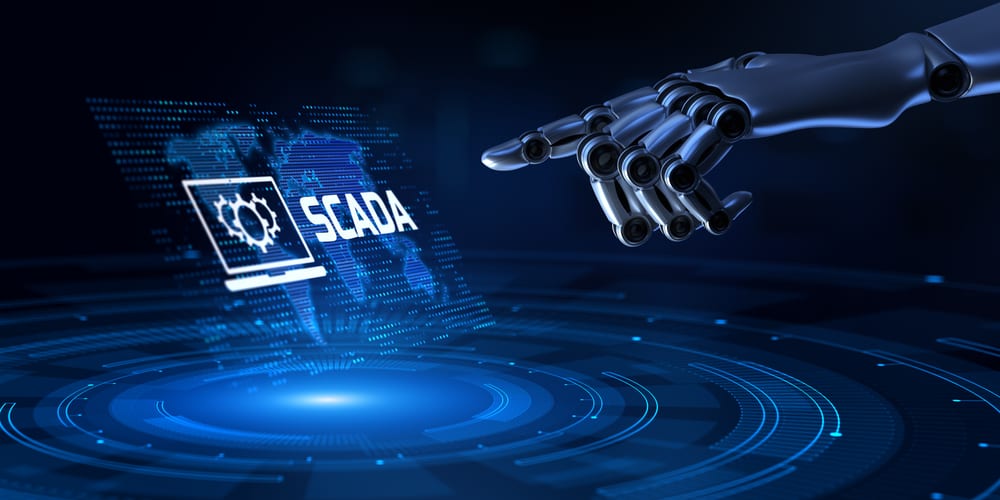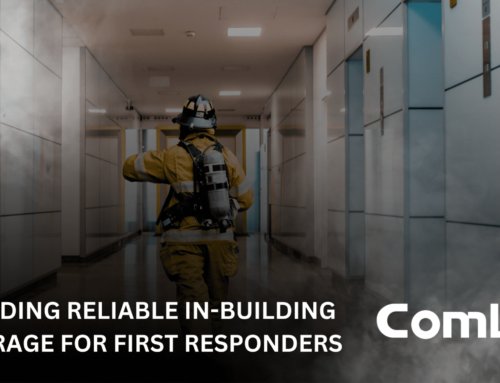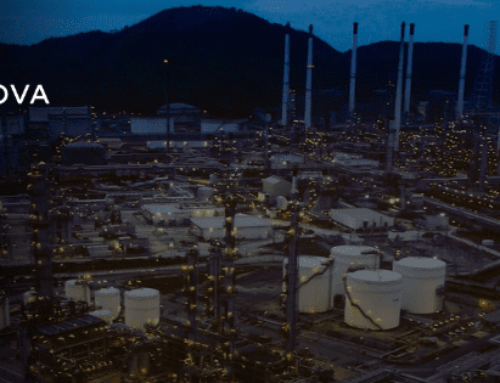Supervisory Control and Data Acquisition (SCADA) is a centralized system of hardware and software that monitors and controls the area. Its priority is to monitor and control equipment involved in industrial processes for organizations in both the public and private sectors. SCADA allows industries to:
- Monitor, capture, and process data in real-time.
- Control processes locally or remotely.
- Collaborate with sensors, pumps, valves, motors, and more through the software.
- Track and record events.
Simply put, SCADA systems are a vital part of maintaining efficiency, processing data, and communicating problems within the system to help mitigate downtime.
BASIC SCADA ARCHITECTURE
To start designing SCADA architecture, it’s best to begin with either a programmable logic controller (PLC) or a Remote Terminal Unit (RTU). These are microcomputers that communicate with the machines in a factory, the human-machine-interface (HMI), sensors, etc, and sends the information to SCADA enabled computers. The SCADA software analyzes, distributes, and displays the data to help make necessary, even time-sensitive decisions.
FOR EXAMPLE: A SCADA system in an industrial plant recognizes that a batch of product is registering a high incidence of errors and quickly notifies the (human) operator. The operator pauses production, reviews the data, learning Machine B was malfunctioning. Since the SCADA system was able to notify the operator of the issue and help resolve it, future loss of product was prevented.
WHO USES SCADA?
For the most part, SCADA is a part of many industrial organizations, to better control efficiency and prevent loss of product. Since SCADA systems can be customized from simple configurations to large, complicated installations, they are the backbone of many industries including:
- Energy and electricity
- Food and beverage
- Manufacturing
- Oil and gas
- Recycling
- Transportation
Without realizing it, you see SCADA systems running all the time, all over Edmonton. They’re in the cluster of refrigerators at the grocery store, they maintain quality standards at wastewater treatment centres, they’re also tracking your energy usage at home.
SCADA’S FOUR FUNCTIONS
While SCADA systems have the ability to do many things there are four core functions required the most:
- DATA COLLECTION: The data acquired often involves an analog to digital conversion, such as converting a temperature to degrees Celsius.
- COMMUNICATION: The data collected is sent upstream to a consolidator and validated.
- DATA PRESENTATION: Now the data is organized and presented to system operators to make their decisions. Presentations vary from graphical to tabular, or mapping.
- CONTROL: The operator inputs decisions or commands based on the data, actions are taken by either PLCs or RTUs.
THE BIRTH OF SCADA
To better understand SCADA, we must understand the difficulties encountered by industrial organizations. Before SCADA, industrial plants, manufacturing floors, and remote sites depended on on-site personnel to manually observe and control the equipment.
As these industries expanded, long-distance solutions were needed. They enlisted help from relays and timers that could provide some supervision without employees having to visit each location. This did solve many problems but as the companies continued to grow, the relays and timers were difficult to reconfigure.
Then, shortly after computers were developed in the 1950s, supervisory controls became popular with utility companies. In the ‘60s, telemetry (the automatic measurement of data, transmitted by radio or other means) was established for automated communications. It was in the ‘70s, during the rise of PLCs and microprocessors that the term “SCADA” was coined. It was then, that enterprises discovered the ability to monitor and control automated processes.






